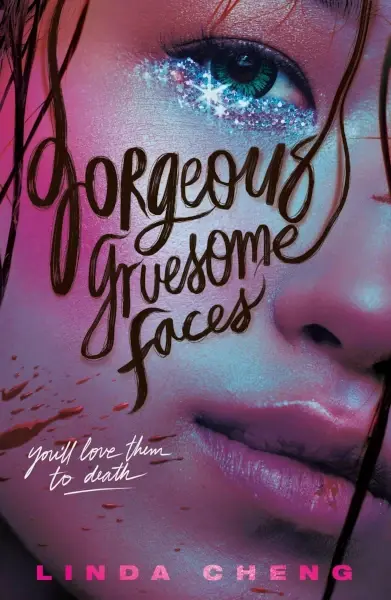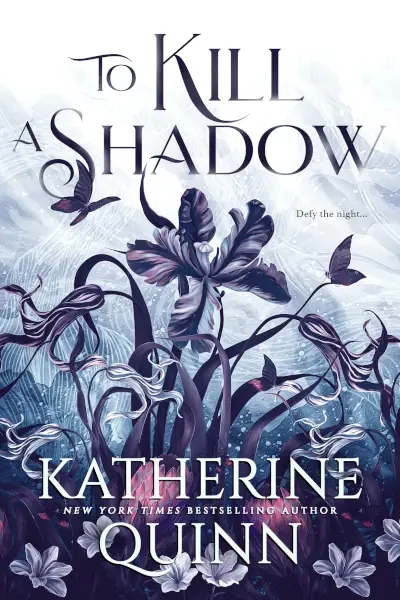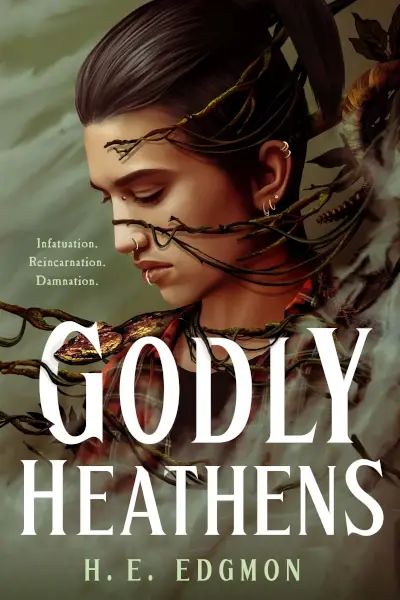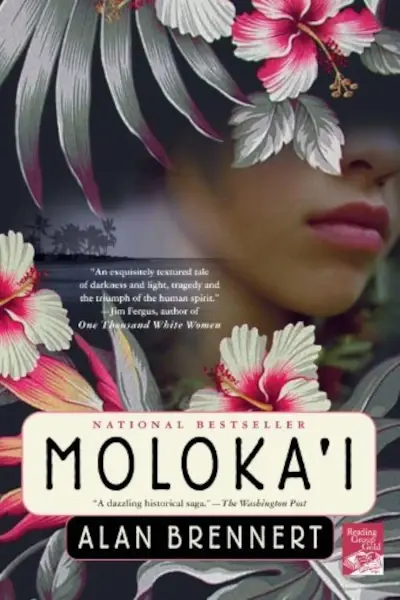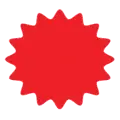Top reviews:

As the owner of Miracle Books Nora Pennington occasionally offers shop-at-home services to her customers. In Lucille Wynter’s case she takes it a step further bringing books to the reclusive woman and sitting with her in her sparsely furnished “boot room” where they share tea and Lorna Doones. When Lucille fails to appear one day a worried Nora calls her only to hear a faint “Help me. Please!” from Lucille’s landline. Following the instructions her boyfriend Sheriff Grant McCabe once gave her for kicking a door in Nora breaks in only to find Lucille dead and Wynter House filled floor to ceiling with rotting food trash and books books books. Lucille has left Nora a letter thanking her for her visits and entrusting her with a special book written by Lucille’s father Hugo Wynter. The volume contains a woodblock engraving of a set of bookshelves and a poem about a little lost library. Each verse contains cryptic clues that Nora hopes will help her figure out how Lucille could have lost a library and perhaps even help Nora find it. Lucille’s children Harper Beck and Clem commission Nora’s friend Bea an antique dealer to help clear out their mother’s house and Nora uses the time while Bea is decluttering to follow the clues in the poem. In the meantime McCabe tells her that Lucille wasn’t killed in a fall but was strangled. Nora's search for the lost library and her quest to find Lucille’s killer intersect but chance plays as great a role as sleuthing in their solution. The grim ending reveals a sad history that strips all the joy from Nora’s efforts.
Read more...

In an afterword Clarke tells readers how this story began as a BBC Radio 4 broadcast. Or rather she explains how her father’s neurodivergence her beliefs about the consciousness of trees and the music of Kate Bush begat a tale in which a young woman sees her future during a walk in a snowy forest. The author also explains how she was certain that Jonathan Strange and Mr Norrell (2004) contained a footnote describing the city where her protagonist lives but that it’s gone now—probably removed by a fairy “for reasons of his or her own.” It’s laudable that Clarke wants her readers to experience the narrative without preamble but this backstory reveals her charms as a writer in a way that the story itself does not. Our heroine Merowdis Scot feels most at home in the woods and most herself in the company of animals. Even her sister Ysolde—who comes closer than anyone to understanding her—is no substitute for Merowdis’ pig her dogs her many cats or the spiders that weave their webs undisturbed in her room. Merowdis is taking a winter walk in the company of a trio of her four-legged companions when she encounters a fox and a blackbird and tells the wood of her desire for a child—a “midwinter child…A child to bring light into the darkness.” Given that Merowdis can’t imagine marrying and given her ease with animals and unease around people her wish will require a miracle that’s very different from the miracle found in the Christmas story. Once Merowdis sees her fate this tale takes on some of the uncanny truth of folklore. Getting to this point though means connecting with an “unconventional” heroine who is both familiar and unexceptional in both children’s lit and books for grownups.
Read more...

For Rekdal all poems regardless of form or any other apparently defining feature require individuals to pay “conscious attention to how [they] think about and use language.” Readers must therefore dispense with interpretations they may bring to a poem and instead become literary “detective[s].” To work toward that end she dedicates each chapter to in-depth discussions of poetic elements—diction rhyme meter etc.—and to what she calls “forensic” analyses of those elements that she accomplishes by examining works by such diverse poets as François Villon and Robert Hayden. What sets Rekdal’s method apart from simple close reading is that it focuses on how meaning—in the form of poetic “evidence”—accrues for individual readers. This gives insight into the way that poets combine elements for a particular effect. The author further suggests that forensic ladder-style readings give readers the space to question themselves and their own observations (for example why they may be drawn to certain images or words). In this context even “red herring” misreadings are useful for the way they help individuals learn to navigate the polysemic complexities of poetry and become more skilled reader-detectives. To help individuals better understand—and wrestle with more meaningfully—the poetic elements she brings to the fore Rekdal offers exercises and a selected list of poems to consider at the end of each chapter and a comprehensive glossary of poetic terms. This meticulously crafted guidebook will appeal not only to teachers seeking to educate beginning students of poetry but also anyone seeking to understand the intimate and complex connection between poets and their readers.
Read more...

The star of the season is the Cliffs Hotel a marvelous restored Victorian mansion overlooking the ocean. Building contractor Shannon Hammer and her crew are working on plans for a Christmas Fun Zone on the grounds highlighted by a carousel and of course Santa. Shannon is close to Bill and Lillian Garrison who own the Cliffs and their children who all work there except for the eldest Logan who is in the Navy. Logan’s stunning but awful wife Randi is a close friend to Shannon’s archenemy conniving backstabber Whitney Reid Gallagher who ruined Sharon’s long friendship with Arabella Garrison. Soon after Logan surprises the family by leaving the Navy and taking a job as community director for Homefront a community supporting veterans cracks quickly appear in long-standing family relationships and it’s clear that Logan and Randi’s marriage is on the rocks. Shannon is enjoying a fancy pre-Christmas dinner at the Cliffs with her fiance popular author MacKintyre Sullivan and their circle of friends when the lights go out. When Shannon goes to check the circuit breakers with Mac and their friend Police Chief Eric Jensen she finds Randi with her throat slashed. The fact that one of Shannon’s pink tools was used to do the deed makes her determined to find the killer. Luckily both Shannon and Mac already have some experience as sleuths and there’s no shortage of people who hated Randi.
Read more...

Nyla Braun unkindly dubbed “Encyclopedia Braun” by her classmates is taking the spring birding tournament between Anderson Elementary’s City Birders and Penn Elementary’s Burb Birders very seriously. She’s determined to count the most birds and learn all the bird songs and calls allowing her to leave Anderson “on a high.” Becoming obsessed with her interests isn’t new—but this time she also wants to improve her social status by leading the City Birders to victory. Nyla’s dreams start to come true when the wealthy Portia invites her to study for the trivia portion of the competition. Nyla already has a best friend but Tasha isn’t into birds and Nyla can’t put birding—or her chance at popularity—on hold. Thankfully Nyla gets abundant support from Aunt Cherise Granddad and her parents who help her with both birding and feelings (even if Nyla sometimes struggles with her mom’s relentless positivity). In her debut Richter skillfully addresses mild tensions between the City Birders (who are mostly Black like Nyla) and the Burb Birders (who are mostly white) and shows how common interests can unite people. With clear descriptive writing a tight storyline and plenty of bird-related information (including excerpts from Nyla’s birding journals and checklists) readers may feel inspired to explore birding too.
Read more...

Becca who’s nearly 13 had different hopes for her summer ones that didn’t involve leaving Connecticut to bond with her mom at Get Away Ranch a Montana resort that promises yoga and cooking classes a spa and swimming pool and more. Due to a mix-up they end up instead at rustic Far Away Ranch with its spotty internet and more down-to-earth facilities. Meanwhile Jon who’s almost 14 is working at the ranch with his dad. He’s heard stories from his great-grandmother about the founding of a famous nearby ghost town Piney Woods and the treasure left somewhere in the area by an outlaw in the mid-1800s. Jon who possesses a clue to the treasure’s whereabouts invites Becca to help him search for it. They follow interconnected clues and after some missteps learn to trust each other. All the while Becca is trying to figure out who she is and what kind of friend she can be both in Montana and back home. Vivid poetic descriptions bring the setting and characters into focus and the mystery maintains a strong pace. An overbearing YouTube personality who’s also pursuing the treasure and chases after the kids feels more like a caricature of a bad guy however. Main characters are cued white.
Read more...

Everett can’t resist the lure of fame and bright lights but his current “live show” in his tropical venue doesn’t give him the acclaim he wants. When he’s onstage at the Sandy Straw he’s largely ignored by the customers who are busy eating and chatting. Then he learns about the Rockefeller Center Christmas tree inspiring a new goal: He sees his “destiny” as becoming “the most famous Christmas tree in the world.” Although he’s a three-foot plastic palm Everett drapes himself in tiny lights and heads to the airport. He lacks money identification and a ticket but his friend Bird flies into action. Cavalierly subverting security Bird steals a passport and paperwork distracts the agent and ushers Everett through. The stolen credit card subsidizes snacks photos and souvenirs but then all New York flights are delayed by bad weather. Everett is dejected—until a little girl with dark skin recognizes him as the Christmas tree he feels he is planting “a tiny seed” in his heart. Springing to action with hard work and irresistible enthusiasm Everett saves Christmas for the stranded passengers performing for them uniting them and spreading “joy everywhere.” Wexler brings the narrative to a familiar but chipper conclusion while Berthiaume’s cheery deep-toned detailed cartoon illustrations rely on varied layouts depicting expressive people who are diverse in terms of skin tones; Everett’s an especially winsome protagonist.
Read more...

Mintz begins at a dark moment when soon after Lennon was killed he is charged with inventorying the musician’s countless possessions: roomfuls of guitars the attaché cases with which he was smitten boxes of cassettes and their works in progress granny glasses “in a rainbow of tinted colors.” He came into this responsibility circuitously. As a Los Angeles disc jockey he listened to a promo of Ono’s 1971 solo album Fly and invited her to be an on-air guest. She agreed. Interestingly Mintz writes although he was well aware of her marriage to Lennon “I was never a Beatles superfan.” Instead he adds he was more of an Elvis freak which didn’t necessarily serve him well when after Ono began to call him at all hours Lennon did too. “It was a never-ending loop” he writes an eccentric conversation that often found him wondering why it was he on the other end. There’s no brutal dish of the Albert Goldman trash-the-star variety though Mintz doesn’t shy from the dark side: Lennon he writes could be a monster when he was drinking and he harbored odd views: “Even though John had smoked ingested or snorted just about every illegal recreational drug he could get his hands on he was weirdly suspicious of the ones that were properly prescribed and proven efficacious.” As for Ono she’s alternately remote and generous instinctively mistrustful—and for good reason—of anyone who wanted a piece of her husband as so many did. All in all he writes “they were a magical couple” and it’s clear that all these years later he misses them.
Read more...

Throughout her illustrious career from her 1950s star-making Broadway debut as an understudy in Pajama Game to leading roles in acclaimed films like Some Came Running and The Apartment Shirley MacLaine has diligently chronicled her life’s journey. Her bestselling memoirs beginning with Don’t Fall Off the Mountain (1970) and including Out on a Limb (1983) have documented her professional ascent and approach to living a fully independent well-traveled life as a modern woman. Now in her 90s MacLaine revisits her experiences through a collection of personal photographs and extended captions serving as a visual narrative thread. In mostly laudatory terms her memoir showcases MacLaine’s connections with luminaries from various spheres of her personal political spiritual and show business life. Such reflections include her long unconventional marriage to businessman Steve Parker her Rat Pack associations (Frank Sinatra Dean Martin and Sammy Davis Jr.) and her encounters with U.S. presidents and controversial political figures like Nikita Khrushchev and Fidel Castro. Of the latter she notes “Castro and I had two days together. He was open funny and curious especially about the Kennedys and did not come on to me as Barbara Walters suggested he would.” On the flip side MacLaine occasionally dishes a few subtle asides: Jerry Lewis was “overpowering and controlling and I didn’t think he was funny” director Herbert Ross “was an arrogant guy very full of himself” and of her Terms of Endearment co-star she simply comments “I did not enjoy Debra Winger.” MacLaine’s images and captions cumulatively reflect an enviable well-lived existence offering glimpses into her world travels family friends and various love affairs. An engaging but lightly written exploration the scant narrative may appeal primarily to her devoted fans.
Read more...

Rather than spin this memoir out in a single chronological thread the co-authors (who are not related) open with the good stuff—the recruitment of “Charlie B.” into NASA in 1979 as the fourth Black astronaut and his four space flights between 1986 and 1994. They follow with information about his childhood his early career as a Marine pilot and test pilot and his later stint as the head of NASA from 2009 to 2017. He brings an unusually personal tone to his experiences in training and in orbit so that whether describing routine meal prep the pleasure of viewing lightning and atmospheric auroras from overhead or the fraught process of deploying the Hubble Space Telescope and other satellites he will draw readers into each highlight moment. So too will the plethora of official color photos and along the closing timeline family snapshots. Though he generally isn't one for recording complex emotions (even watching the Challenger explode only days after his own first mission touched down gets a relatively low-key reaction) his deep satisfaction at a host of difficult jobs done well comes through clearly. In at least some of the group scenes the astronaut is joined by other people of color. As he says “What a ride!”
Read more...

In a five-year period David Naylor turned the Rayburn Electric Cooperative from a $300 million company to a $1 billion cooperative in the Dallas–Fort Worth metroplex. In this nonfiction debut Scott tells the story of Naylor’s success providing a detailed account of how he transformed Rayburn into a successful “family feel” organization that’s not exclusively focused on cost-effectiveness. (“In fact sometimes we even purposefully avoid the cheapest option because that is the best way to ensure we stay on task and maintain the proper focus.”) Building on Naylor’s story Scott broadens the narrative to apply some Rayburn experiences to what economists refer to as the wider VUCA (volatile uncertain complex and ambiguous) world. She notes that one of the key ways Naylor and his team navigate that world is by hiring smart self-motivated people to build a culture of cooperation steadily strengthening the “trust bank” at Rayburn by avoiding such trust-eroding practices as micromanaging which can create “a negative and demoralizing work atmosphere.” In these and other ways Scott describes how Rayburn has avoided becoming “a stale utility stuck in the past.” While all this material is conveyed with energy and clearly sincere enthusiasm the book can often feel more like a Rayburn-specific recruiting brochure than a broader study of how a company can stay competitive in a rapidly changing world. Scott and Naylor too frequently resort to obvious observations: “When employees from different generations work together they can draw from their unique life experiences and professional backgrounds to solve problems”; “growth is a double-edged sword.” Still Naylor’s passionate advocacy for a less regimented more adaptive workplace is ultimately inspiring; readers at all levels of management will appreciate a look at a corporate environment done right.
Read more...

Ever since Ancel Keys published the findings of his Seven Countries Study in 1978 nutritionists have promoted the benefits of the Mediterranean diet. Our understanding of how diet affects our overall well-being has changed over time but the idea that minimally processed foods—plants whole grains and unsaturated fats—are good for us is well established. While on a trip to Spain the author a health writer and natural foods cook discovered variations on this way of eating that would change her life. The first recipe in the book is for a vinagreta but the author introduces this simple dressing in the context of a whole chapter on olive oil in which she explains why it’s a superfood; she suggests several ways for enhancing the oil’s health benefits while enjoying its delicious versatility. This section is followed by a lengthy and informative discussion about the gastronomic and nutritional powers of sofrito. Keuneke supports her health claims with relevant research—the bibliography and suggestions for further reading take up more than 50 pages—and she shares stories from her travels. The book includes interviews with world-renowned chefs (including Carme Ruscalleda the only woman in the world with seven Michelin stars) and recipes for some of their signature dishes. Throughout Keuneke offers readers a wealth of details about the cultures—Basque Castilian Galician Navarrese and Catalan—that have produced these incredible foods. Home cooks may have difficulty following some of the recipes such as one for caldo de pescado that begins with this instruction: “Call ahead and ask the fishmonger to set aside 4 pounds of fish heads and carcasses.” That said the author does provide an annotated list of retailers that can provide some of the ingredients readers might not find easily and Keuneke enthusiastically and convincingly argues that it’s worth venturing beyond the supermarket to make these dishes.
Read more...

An unnamed narrator laments that despite the book’s title mice wouldn’t be strong enough to do the job of pulling Santa’s vehicle. If cats tried to do so they wouldn’t be able to agree on which direction to go so they wouldn’t be a good replacement either. Dogs would slobber and sit on the sleigh instead of pulling it and they’d shed all over the presents before delivery. Ducks like magical reindeer can fly but a sleigh wouldn’t float if they landed it in a pond. The narrator quickly crosses snakes off the list (“It would be safer to walk”) as well as elephants; the latter are too heavy to land on roofs and have “elephant-sized poops” to clean up. It seems that flying reindeer may be the best choice after all as they make Christmas Eve a success every time. Barnsley offers a simple setup that results in a consistently clever and engaging story overall. Epelbaum’s full-color cartoon illustrations are full of small details and a vivid starry sky background as well as expressive faces on human and animal characters. The illustrator also effectively plays with perspective keeping the visual interest high.
Read more...

For the citizens of the wealthy kingdom of Arrow the most exciting entertainment can be found in the arena—for the gladiators from the surrounding kingdoms it’s a relentlessly brutal series of fights to the death. The combatants hope to win enough matches to earn the royal title of “Bloodguard” which will allow their families to immigrate to Arrow. Leith a gladiator in his mid-20s is a skilled fighter driven by his desperation to support his mother and two younger sisters (and by the rage built from years of killing his peers for an audience’s delectation). After killing the arrogant Lord Filip (who challenged him to an impromptu duel) and subsequently emerging victorious in a surprise melee with a group of his peers and a dragon Leith is getting closer to becoming a Bloodguard. He attracts the attention of Princess Maeve a 20-year-old healer. Now that her fiance Lord Filip is dead she’s in dire need of a noble spouse so that she can claim the throne when she turns 21. Maeve proposes a deal: She’ll help Leith achieve the Bloodguard status in exchange for his hand in marriage. But as their relationship blossoms problems arise when royal secrets are revealed and government corruption is exposed. Soon they’re not just vying for a title and a crown—they’re fighting for their lives. Robson’s novel is an exciting blend of action palace intrigue and romance in a high fantasy setting. The story unfolds through the perspectives of Maeve and Leith who are both compelling and well developed with flaws foibles and distinctive voices. The supporting characters are equally intriguing. Readers will love the richly detailed worldbuilding and combat sequences as well as the use of snarky modern language (“Of course the only royal offering me help is one who’s clawing her way to the throne not already sitting pretty on one. That tracks” Leith gripes). The book’s thoughtful queer representation and exploration of oppression and exploitation are also noteworthy.
Read more...

In Labrie’s raw account there is the failure of her mother to parent her daughter without resorting to abuse. There is also her grandmother’s refusal to seek medical help for her daughter’s escalating mental health crisis. And LaBrie tells of battling her own mental health issues making clear the danger she faced in having to parent herself. The author does a remarkable job presenting the ways in which our health care system has failed the women in her family. Much of the memoir focuses on LaBrie’s sense of failure as a fiction writer. She owns up to feeling jealous of a friend who has become popular thanks to her own book: “At parties” she writes “when people learn that we are close they speak about her book in breathless tones: ‘Oh I love her.’ But you don’t even know her I want to say back. Ilove her.” LaBrie fears that a novel she is working on isn’t more appealing because she is unwilling to give in to the pressure to write in a certain style: “I’m not postracial but a Blackness that defines itself entirely oppositional is never a type of Black I learned how to be.” Early on LaBrie reasons that when faced with problems in life “No one is allowed to fall apart.” This memoir is her attempt to challenge that perspective.
Read more...

Alexandra Bellamy kissed her first love goodbye on the day of her wedding to war hero Colonel Magnus Brightwall widely known as the Beast. The seeming betrayal stalled her new life and led to five years of separation from her husband who went off to Spain as a diplomat without her. Now Magnus has returned to England and proposed a permanent separation but not before they pretend to be a happy couple so as not to jeopardize his imminent elevation to Earl of Montcroix. Saddened that her action hurt her husband Alexandra agrees to the plan—and thus begins their stay at the guesthouse known as the Grand Palace on the Thames. Their forced proximity and the presence of the inn's charmingly eccentric inhabitants bring Alexandra and Magnus to a pained understanding of the happiness they could have had together. This "Beauty and the Beast" rewrite is evocative of some of Lisa Kleypas' and Sherry Thomas' historical romances where marriages must be rebuilt by two complicated people healing the wrongs they did to each other and baring their true selves. Long's thoughtful prose is studded with striking analogies for emotions and character traits that reward attentive reading. For instance unfulfilled love is compared to the weather: "Did it merely spend itself like a storm and then make way for new weather?" There are also some chuckle-inducing moments with the style ably buttressing the plot which asserts that romance is hollow without a man respecting a woman's choices and selfhood.
Read more...

Daniel Fassett’s life has been a disappointing one filled with regret but he sees a second chance in retirement from his factory job in Granbury Vermont his hometown. Expecting a generous pension after 30 years of employment he buys a small cottage in Key Largo Florida eager to start life anew at 62 years of age. However he loses control of his car and drives into a freezing river where for at least 20 minutes he is unconscious before being rescued. When he awakens from his coma four months later his life is in a shambles—facing a considerable rehabilitation he discovers his pension was greatly reduced on the basis of a technicality; all but broke he has no choice but to abandon his retirement home. Utterly despondent and terrified to face a long winter alone he comes up with a crazy idea one fantastically implausible but nevertheless fascinatingly developed by the author: Daniel decides he’d like to spend the winter suspended in hibernation and shares his plan with his old friend and physician William Butcher. Butcher is initially incredulous but then decides it can be done and they freeze Daniel in a “hibernation casket” housed in an old sugar shack designed for the production of maple syrup. The plan works—Daniel wakes rejuvenated after nearly 119 days of slumber—but when the world learns what he has accomplished it turns his life inside out. Ellis’ prose is simple and powerfully foursquare. When Ralphie Daniel’s son asks him why he froze himself he answers plainly: “Desperation. Money. Sadness . . . loneliness.” This is a strange and marvelously unpredictable tale one that raises provocative questions about the tension between scientific progress and moral goodness. The narrative is intelligently conceived and executed and refreshingly original.
Read more...

Two decades ago Italian sculptor Fabro (1936-2007) asked curator Rowell if she “would edit an anthology in English of his lectures and writings.” Rowell agreed to participate but felt it would have been better “to write an illustrated book that prioritized his sculpture at the same time shedding light on the thinking behind it.” Before the project got going Fabro died. To honor his achievement Rowell has produced this volume in which she draws from the many interviews Fabro granted to her and others to “clarify the mysterious beauties and infinite complexities of Fabro’s art.” In this amply illustrated coffee-table book Rowell charts Fabro’s career from formative influences such as the writings of Locke and Rousseau to his two-year 1960s “moment” as an adherent of Arte Povera characterized by “a drive to oppose the currents of consumerism and industrialization.” Subsequent decades included a period in which he incorporated Wittgenstein’s definition of tautology into works involving “commonplace things that engage the senses directly”; his series of Piedi (Feet) 1968-73 “among his best-known sculptures singled out for their unclassifiable grotesquery” and intended “to reinvent the traditional premises of sculpture by attacking its own conventions”; and later experiments such as “hanging stone sculptures in the air setting them on a pitched diagonal suggesting imminent fall or even sliding down stairways accentuating a precariousness and the loss of sculpture’s generic stability.” Rowell a passionate guide provides relatively little analysis but describes Fabro’s works and influences in considerable detail. She writes that Fabro’s work demonstrated “a range of diversity and complexity rarely seen in a single artist.” Readers of this handsome volume will understand why.
Read more...

Life is good for Bailey King. She’s recently opened Swissmen Candyworks as a counterpart to Swissmen Sweets the candy store she helps her Amish grandmother run. She’s happily engaged to county sheriff Aiden Brody. And she’s the go-to sitter for her future mother-in-law’s pet pig Jethro whose latest feat is covering himself with gingerbread taffy. Lida Lantz one of her Amish workers is upset over Jethro’s accident but Bailey secure in her personal happiness is more concerned about other things. There’s been a series of break-ins at Amish businesses. She’s expecting the arrival of her globe-trotting parents—a father who’d grown up Amish and the English mother he left the community to marry—who’ve been pushing wedding plans on her. And she’s worried about the whereabouts of Lida’s brother Zephaniah who’s supposed to be shoveling the sidewalk. Eventually Bailey spots Zeph putting up a Candy Land piece on her roof at the direction of Margot the bossy person in charge of town festivities. After Bailey finds Zeph dead below the factory roof and the police find other footprints at the scene it seems possible that his death was no accident. Zeph had sticky fingers from early childhood. He got into trouble with his family and the Amish community for stealing. And he was probably involved in those break-ins. Adding to Lida’s heartbreak her father refuses to let her continue working for Bailey who’s already helped solve several murders and is determined to learn the truth about Zeph.
Read more...

Moss remembers her mother and father as the “gods and monsters” who dominated her girlhood and taught her that “care and attention [were] scarce resources.” Yet as she tells the stories of growing up in Scotland and northwestern England she also contests those memories with dueling voices: that of the storyteller she would become and that of the self-critical self-loathing skeptic who often chided herself for an otherwise comfortable privileged life. As a teen Moss took refuge in novels by authors like Charlotte Brontë and Sylvia Plath feminist-inflected analyses of which she interweaves into a narrative of a youth spent becoming the “clever girl” who consumed books while struggling with an eating disorder. A university scholarship eventually took her away from a fraught home life. Success as a scholar and writer followed yet she remained haunted by her past and in particular the “northern Protestant work ethic fused with second-wave feminism” exemplified by the Ph.D. mother who “fum[ed]” in suburbia. Yet in the shadows of outward good fortune the author’s body shame continued to lurk driving her to control her physicality with punishing diets and exercise regimens that forced hospitalization and psychiatric intervention. Though at times disturbing in the self-flagellation and personal fragmentation it depicts Moss’ book also presents a compelling portrait of a sensitive deeply intelligent woman struggling to reconcile a difficult emotional past with the misogyny that tainted the social and intellectual environments she inhabited.
Read more...
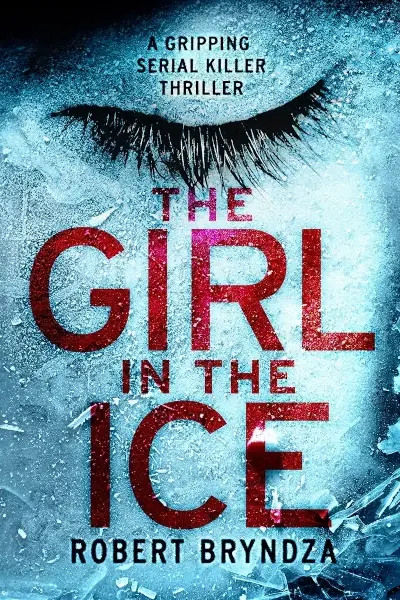

.webp)
.webp)
